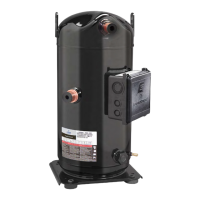
Do you have a question about the Emerson Copeland Scroll ZR KC Series and is the answer not in the manual?
| Brand | Emerson |
|---|---|
| Model | Copeland Scroll ZR KC Series |
| Category | Air Compressor |
| Language | English |
Explains the meaning of various safety warning icons used in the document.
Details critical safety instructions for electrical, pressurized systems, and burn hazards.
General safety statements regarding product usage, personnel qualifications, and standards compliance.
Explains the breakdown and meaning of compressor model numbers.
Introduces general guidelines for system design using these compressors.
Defines the acceptable operating pressure and temperature limits for the compressors.
Notes the absence of internal relief valves and the requirement for high-pressure controls.
Describes the ASTP feature for compressor protection against discharge overheating.
Specifies the requirement and settings for high-pressure cut-out controls.
Recommends low-pressure cut-out for system fault protection and operational limits.
Discusses the use and placement of discharge mufflers for noise reduction.
Addresses minimum run time requirements to prevent oil loss and compressor damage.
Provides guidance on adding lubricant for systems with high refrigerant charges.
Explains scroll compressor sound characteristics and vibration mitigation.
Details the use of accumulators for liquid refrigerant management in specific applications.
Specifies crankcase heater requirements based on system charge and importance for start-up.
Describes the copper-plated steel fittings and brazing considerations.
Discourages pump down cycles for scroll compressors due to potential oil issues.
Discusses reversing valve sizing, defrost cycles, and potential noise mitigation.
Emphasizes system cleanliness, moisture levels, and the use of filter-driers.
Details recommended oil types for different refrigerants and procedures for oil removal.
Highlights the importance of correct electrical phasing for compressor rotation and operation.
Warns against using compressors for system evacuation due to potential damage.
Covers the availability and design of tandem and trio compressor assemblies.
Discusses oil balancing and testing requirements for manifolded compressor systems.
Outlines essential system tests for design validation and identifying potential issues.
Details the procedure for testing continuous liquid refrigerant floodback.
Describes testing for liquid refrigerant migration during system off-cycles.
Provides safety instructions and procedures for lifting and moving compressors.
Describes compressor mounting methods and adapters for different applications.
Outlines recommended brazing materials and techniques for assembly.
Specifies pressure testing limits and precautions for the compressors.
Details best practices for charging systems with refrigerant during assembly.
Covers wiring procedures, torque values, and sealing terminal boxes.
Describes the initial steps for assembling tandem compressor units.
Explains methods for draining oil from the compressor.
Advises on replacing contactors and motor protection modules.
Details how to adapt new compressors to existing mounting dimensions.
Describes cleanup procedures and filter drier recommendations after a motor failure.
Provides critical instructions for initial system start-up and operation.
Offers steps for diagnosing issues with the Kriwan motor protection module.
Guides troubleshooting of CoreSense module status and error codes.
Outlines a diagnostic procedure to verify compressor operational health.
Provides considerations and requirements for retrofitting systems with new refrigerants.
Explains the fundamental compression mechanism of a scroll compressor.
Presents graphical representations of compressor operating limits for different refrigerants.
Illustrates the terminal box layout and wiring for CoreSense protection.
Shows the location and appearance of the Advanced Scroll Temperature Protection label.
Illustrates the correct placement for installing crankcase heaters on compressors.
Details brazing procedures for new installations, including materials and techniques.
Explains the process for safely disconnecting and reconnecting system components.
Lists the specific parameters for conducting field application tests.
Presents recommended and alternate system design configurations.
Provides maximum refrigerant charge limits for various compressor models.
Lists recommended torque values for specific fittings and connections.
Details specifications for different motor protector modules.
Explains CoreSense LED flash codes for status and fault conditions.
Continues the detailed description of CoreSense LED fault codes and troubleshooting.
Illustrates oil equalization line and two-phase tandem line configurations.
Shows the tilting procedure for installing oil equalization lines.
Provides step-by-step instructions for retrofitting Kriwan modules to CoreSense.
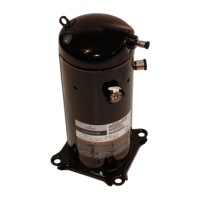
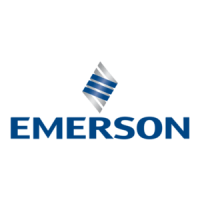
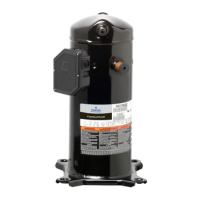
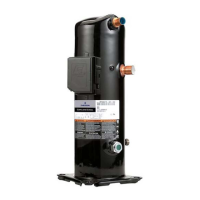
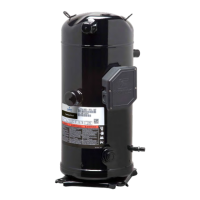
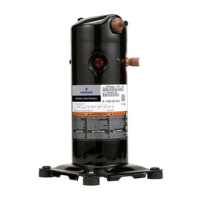
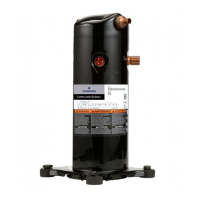
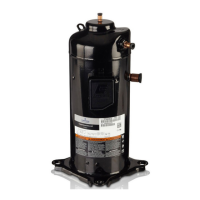
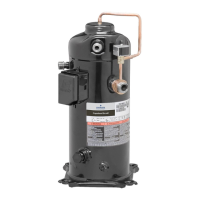
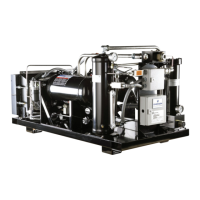
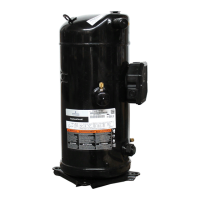
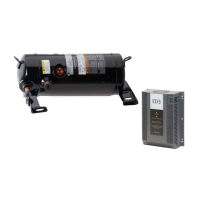
